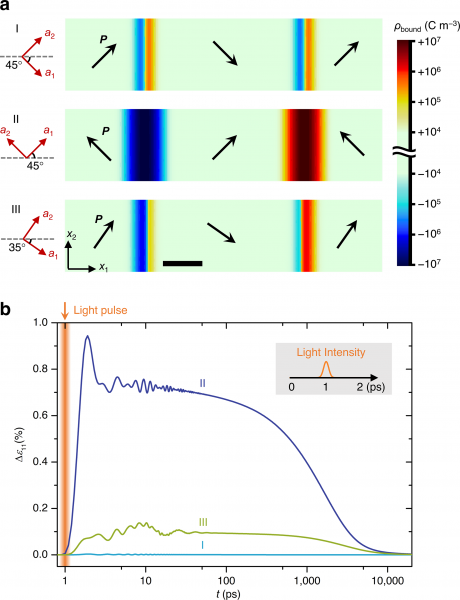 Dynamical phase-field model of coupled electronic and structural processes
Dynamical phase-field model of coupled electronic and structural processes
T. Yang, L.Q. Chen, npj Computational Materials 8 (2022): 130.
https://doi.org/10.1038/s41524-022-00820-9
Many functional and quantum materials derive their functionality from the responses of both their electronic and lattice subsystems to thermal, electric, and mechanical stimuli or light. Here we propose a dynamical phase-field model for predicting and modeling the dynamics of simultaneous electronic and structural processes and the accompanying mesoscale pattern evolution under static or ultrafast external stimuli. As an illustrative example of application, we study the transient dynamic response of ferroelectric domain walls excited by an ultrafast above-bandgap light pulse. We discover a two-stage relaxational electronic carrier evolution and a structural evolution containing multiple oscillational and relaxational components across picosecond to nanosecond timescales. The phase-field model offers a general theoretical framework which can be applied to a wide range of functional and quantum materials with interactive electronic and lattice orders and phase transitions to understand, predict, and manipulate their ultrafast dynamics and rich mesoscale evolution dynamics of domains, domain walls, and charges.
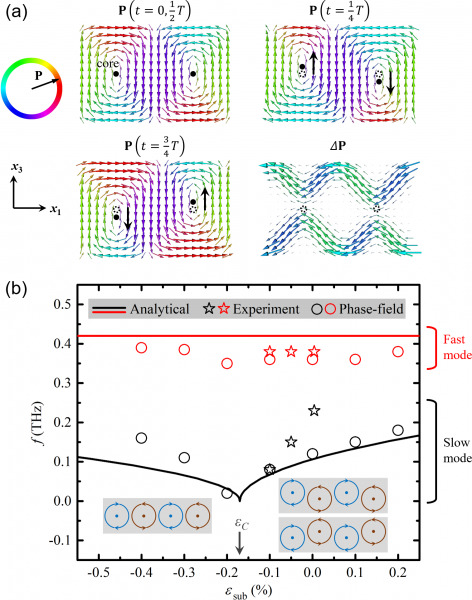 Condensation of Collective Polar Vortex Modes
Condensation of Collective Polar Vortex Modes
T. Yang, et al., Physical Review B 103 (2021): L220303.
https://doi.org/10.1103/PhysRevB.103.L220303
The dynamics of extended objects such as domain walls, domain bubbles, vortex structures, etc., can be described by their equations of motion associated with their effective mass and spring constant. Here we analytically derive the equations of motion for the polarization dynamics and elastodynamics for the structural responses of ferroelectric polar vortices, and theoretically extract their effective mass, spring constant, and mode frequencies. We demonstrate two sub-terahertz phonon modes and predicted their frequencies, both consistent with our recent experimental measurements and phase-field simulations. We show that elastic modulation of the energy function and spring constants leads to a condensation of a collective mode upon a second-order structural transition from symmetric to asymmetric vortices at a critical strain, analogous to the ferroelectric soft phonon mode at a ferroelectric transition. The present work offers a theoretical framework for predicting and manipulating the ultrafast collective dynamics of polar nanostructures.
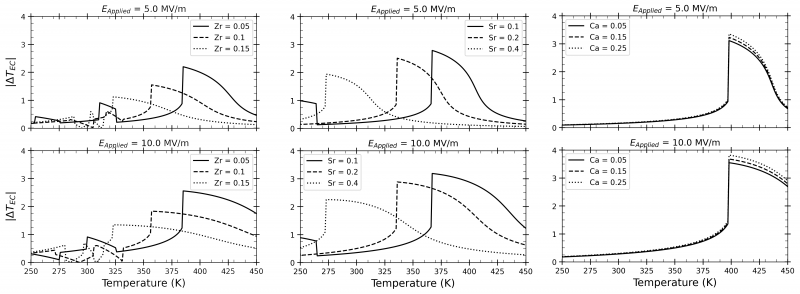
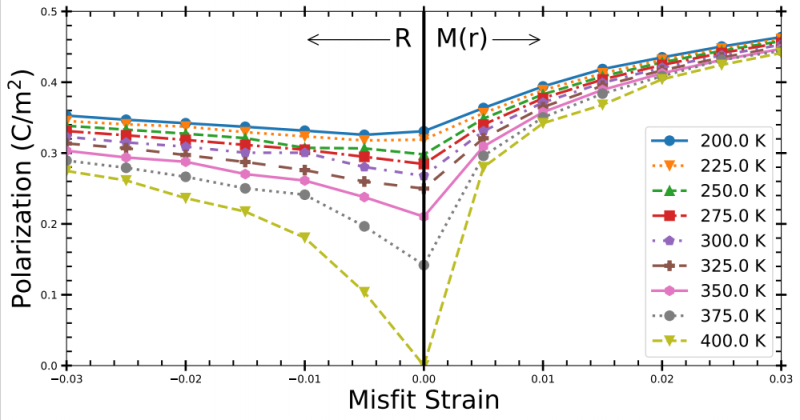 Q-POP-Thermo: A general-purpose thermodynamics solver for ferroelectric materials
Q-POP-Thermo: A general-purpose thermodynamics solver for ferroelectric materials
J. A. Zorn, et al. Computer Physics Communications [275]108302 (2022)
Q-POP-Thermo is a program designed to compute thermodynamic monodomain equilibrium states and their properties for ferroelectric single crystals and thin films based on the Landau-Ginzburg-Devonshire (LGD) Theory. Utilizing symbolic manipulation with the SymPy Library, the governing equations along with appropriate boundary conditions are solved for speedy minimization of the free energy of a crystal. Utilizing the popular Differential Evolution algorithm, with appropriate hybridization, multiple phase diagrams, such as the pressure-temperature phase diagram for bulk single crystals and the common strain-temperature phase diagram for monodomain thin-film systems can be readily generated. Furthermore, a variety of material properties of stable ferroelectric phases, including dielectric, piezoelectric, and electrocaloric properties, can simultaneously be calculated. Validation studies are presented for both thin-film and single crystal systems to test the effectiveness and capability of the open-source program.
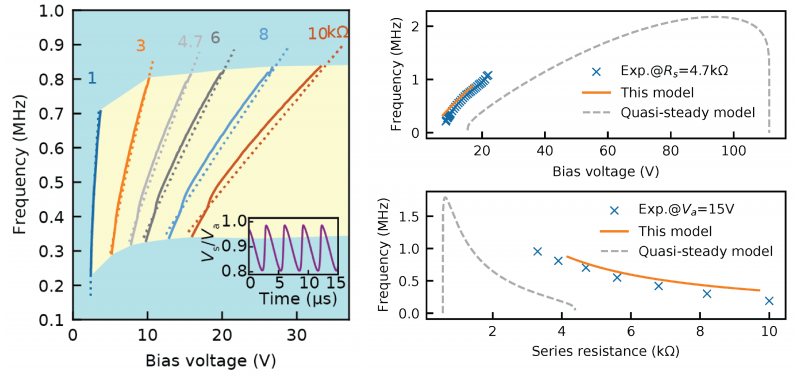
Dynamics of voltage-driven oscillating insulator-metal transitions
Y. Shi, et al., Physical Review B 104, 064308 (2021).
https://journals.aps.org/prb/abstract/10.1103/PhysRevB.104.064308
Recent experiments demonstrated emerging alternating insulator and metal phases in Mott insulators actuated by a direct bias voltage, leading to oscillating voltage outputs with characteristic frequencies. Here, we develop a physics-based nonequilibrium model to describe the dynamics of oscillating insulator-metal phase transitions and experimentally validate it using a VO2 device as a prototype. The oscillation frequency is shown to scale monotonically with the bias voltage and series resistance and terminate abruptly at lower and upper device-dependent limits, which are dictated by the nonequilibrium carrier dynamics. We derive an approximate analytical expression for the dependence of the frequency on the device operating parameters, which yields a fundamental limit to the frequency and may be utilized to provide guidance to potential applications of insulator-metal transition materials as building blocks of brain-inspired non-von Neumann computers.
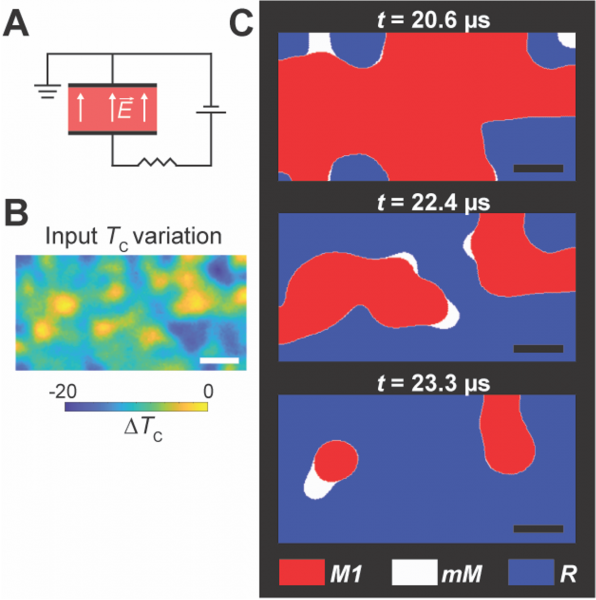
Universal phase dynamics in VO2 switches revealed by ultrafast operando diffraction
A. Sood, et al., Science 373, 352–355 (2021).
https://www.science.org/doi/10.1126/science.abc0652
Understanding the pathways and time scales underlying electrically driven insulator-metal transitions is crucial for uncovering the fundamental limits of device operation. Using stroboscopic electron diffraction, we perform synchronized time-resolved measurements of atomic motions and electronic transport in operating vanadium dioxide (VO2) switches. We discover an electrically triggered, isostructural state that forms transiently on microsecond time scales, which is shown by phase-field simulations to be stabilized by local heterogeneities and interfacial interactions between the equilibrium phases. This metastable phase is similar to that formed under photoexcitation within picoseconds, suggesting a universal transformation pathway. Our results establish electrical excitation as a route for uncovering nonequilibrium and metastable phases in correlated materials, opening avenues for engineering dynamical behavior in nanoelectronics.
